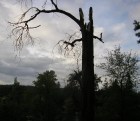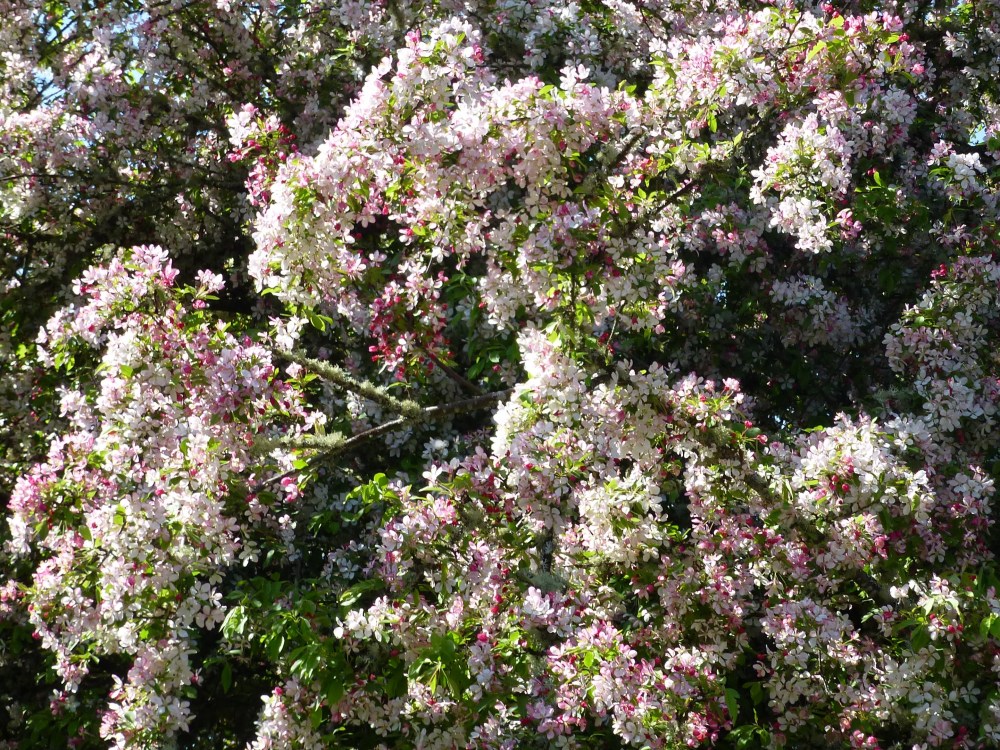By Madronna Holden
In my examination of the Trickster, we have seen a most down-to-earth and concrete figure. He is all “out front”; he has no mysteries. In fact, the source of humor in his tales is often his attempt to cover up his motives when they are so blatantly apparent that we can hardly side with those ingenuous enough to be duped by him. Certainly, these things are as they should be in an archetype whose business is to show us the necessity of humility by putting our human foibles and our human limits into perspective. You will notice that I have been using the word “archetype”, for which I gave a brief definition in the discussion of the Trickster (p.25). It is time for a more lengthy discussion of the concept of archetype as we examine a second example of an archetype found in world folklore: that of the Great Mother.
Jung’s Archetypes
It was the psychologist Carl Jung who introduced the idea of the archetype into contemporary currency. He is responsible for making the archetype a key idea in both the study of folklore and the study of psychology. As a side note, the idea of the archetype is much older than Jung’s popularization of it. The “archetype” was a central idea in ancient Greek philosophy, where it had the meaning of “original idea” or “universal form.” Jung saw fairytales and mythology as expressions of what he termed the “collective unconscious” with its own universal forms. Jung saw the collective unconscious, that is, as consisting of the symbols, feelings and ideas that are persistent across human cultures. The collective unconscious is, in this sense, that which all the world’s peoples have in common. It is the reservoir of our common humanity. In this collective unconscious are the archetypes, which are its central repetitive forms. Jung saw these as dynamic patterns whose processes reveal our human capacities and experience–and as such, they are persistent in folklore throughout the world.
The archetypes, in their universal expression of particular patterns of behavior, feeling, and thinking, have a compelling influence on the human psyche. Their compelling qualities archetypes are illustrated by the fact that they and their symbols often appear in our dreams. This is why the images in dreams and myths may have an uncanny resemblance to one another, and why a myth may resonate so immediately and deeply within us, though we may not be able to explain why this is so in “rational” terms.
The Danger of the Unconscious Archetype
Jung did much of his work as a result of his horror of Nazi Germany. He hoped to understand the human capacity for human evil in order to prevent the recurrence of such human actions in the future. But we must also understand that nature or we cannot “confront the question of evil,” as Jung puts it. As Jung went on, we must “know relentlessly how much good we can do” and without “self-deception or delusion, what crimes we are capable of.” Jung saw the place to gain such understanding as world folklore, in which an examination of its persistent themes or archetypes might yield a view of human nature and the dynamics of human behavior that flowed from it.
An archetype in itself is neither good nor evil; archetypes are no more and no less than the patterns of our own human nature. We saw this in the case of the Trickster figure, which showed us how the same aspects of human behavior might be expressed by a sociopath or redeemer– depending on the responsibility and wisdom with which they are put into action. In their making modeling and making conscious archetypes of human behavior such as the Trickster, Jung felt that folklore had been an essential form of psychological education for human societies for generations. A good many other contemporary psychologists, such as James Hillman and Marion Woodman–and Allan Chinen, whose text we are using in this class, express the same belief.
The Bright and Dark Sides of Archetypes
Jung had more to say about the archetypes. Jung sees each archetype as consisting of both a bright side (an aspect that we readily claim as a part of ourselves) and a dark or “shadow” side, which, like a shadow, remains in darkness, and also like a shadow, persists in trailing us everywhere we go. Both these aspects of the shadow are equally important and are related to one another. Note that this does not mean that the bright side is “good” and the shadow side “evil.” The “bright” and “shadow” refer only to the presence or absence from personal and social consciousness of particular aspects of an archetype.
From Freud, Jung took the idea which Freud took from modern physics, that matter–including psychological matter–can be neither created nor destroyed. Therefore those needs, feelings, impulses which we repress do not simply go away as we would hope them to, but remain with us in our unconscious. And as such, if repressed they are always ready to surface at the most unhappy times. Those parts of ourselves we reject are often also projected onto others. The projection of the image of the “savage” onto Native Americans by those who wished to see only the “civilized” portion of their own actions on this continent is a case in point, and Native peoples often suffered virtually genocidal actions by these “civilizers” as a result.
In like manner, if we reject or hide or neglect part of an archetype (and the part of our human nature it expresses) this shadow will stay with us–and will continue to haunt us. I am reminded here of the way a Chehalis elder once explained something about the traditional “spirit power” of the Chehalis people. Some such “powers” are inherited, and these would pursue those who flee from them until they faced them and claimed them, at which point they might finally take their power for their own.
In this context, we must view the archetypes we inherit as part of our humanity fully consciously– we must see them as whole, in their bright and dark aspects, and not as one-sided, glossed-over, idealized–or repressed. Jung felt each archetype enters our life as a potential that is part of our wholeness –and which may exert considerable power over us if it remains unconscious. By contrast, it may be used as a power for self-knowledge and decision-making if we understand it consciously and use it wisely. We can see this in the case of the Trickster archetype: its rule-breaking may either be consciously and wisely expressed as a transcendent (if still playful) kind of new rule-making–or it may be expressed unconsciously as simply destruction and self-aggrandizement. Sometimes, for those who repress the Trickster all of their lives–and then hit mid-life– the Trickster may “come out” with a vengeance that seems literally like a kind of possession when persons who once appeared entirely without serendipity in their lives literally throw all their former responsibility to the wind. As we read Chinen, we may see examples of ways in which traditional folklore give us an antidote to such compulsive action– giving us the means to balance our psychological impulses and act as whole human beings by choice.
The Great Mother: Full of Mystery
We can understand the idea of the archetype and its light and dark (not good and evil) aspects by looking at another archetype. The archetype we are about to encounter has a totally different feel than that of the Trickster. For all Trickster’s transparency, the Great Mother archetype is full of secrets and mystery. It is in the conclusion to his discussion of the Great Mother archetype that Jung tells us, “The psyche is part of the inmost mystery of life.” By contrast with all Trickster’s incessant bumbling, the Great Mother is decisive as she is powerful. Though it is a part of her very nature to change her being (the Navajo name her Changing Woman, since she passes, as does the earth itself, from barrenness to fertility, from old age, to youth, to old age again), the Great Mother does not change her mind. She does not need to. She makes no mistakes. The only humor we see in her is the humor of our own interaction with her. Or the bemused forbearance of the Grandmother Spider-Great Mother in the Kiowa tale, in which her son disobeys her, thereby becoming twins, and she mumbles to herself that now she must raise two of these troublesome boys.
Unhesitating
The Great Mother does not hesitate; she sets her course and keeps to it. And she has the power to do this. Again, this is in decided contrast to the Trickster figure. The Trickster fools around and bumbles, reducing even the most sacred values and beliefs to (humorously) human proportions. The Great Mother, by contrast, inspires awe and reverence. This quality of the Great Mother is indicated, as Jung points out, by the very title of “Great Mother.” The word “great” differentiates her from our homey, human “Mom” and indicates her incredible power as the source of life.
Fertility, Transformation, Ancestress
With this last observation, I have just characterized the key idea in the pattern of this archetype. The Great Mother is the source of life, and as such she is depicted in three persistent images. Two of her key images flow from her identification with Nature as Mother Earth. First, we find her as images of fertility (the womb, the soil, the internal and mysterious spring of life); second, as transformation (the seasonal round of nature, which frames our own personal birth and death and which is clearly expressed in the Navajo Changing Woman of our readings). Third, she as the source of life, the Great Mother is also identified with woman as mother or as another feminine ancestor.
As the mother of mother, or grandmother, she appears as mentor, tutor, and bestower of magical gifts on both men and women in folktales from around the world. In Native American tales, the grandmother is an especially key figure, and here we find her as the most humanized depiction of the Great Mother, as the gentle and kindly, if exacting, person who teaches us to get along in the world. In European stories, this mother-of-mother, is often simply an “old woman,” whom the heroes in Eastern European tales refer to respectfully as “Grandmother” when they encounter her. In Russian tales, she is often the wily Baba Yaga, who lives by herself, and sets seemingly impossible tasks for those who seek her advice (or are kidnapped by her). Though her name is sometimes translated as “witch,” “Baba” is actually the Russian term for “grandmother,” and she is far from mean-spirited. Nevertheless, she does stick to her own rules to the point of eccentricity (and sometimes, to the point of destruction of those who cannot appropriately perceive and navigate those rules-but for those who can manage them, there are quite incredible rewards). We see an example of Baba Yaga in your reading packet article, “Go I Know Not Where” (read in the last lesson).
In many folktales from Europe (and tales from around the world) the “old woman” simply appears on the path of the hero to give essential counsel, which she sometimes gives as a matter of course, and other times, withholds until some sort of test is passed. Interestingly, such a test often indicates the hero’s ability to recognize, accept, and value this old woman herself. If she appears as ugly, frail, or diseased, the protagonist is expected to honor and value her power nonetheless, as well as to experience her as attractive. We will see how this theme develops in the analysis of “An African Tale,” our reading in a later lesson in this course.
The Good Mother and the Terrible Mother
Next we shall turn to look at the light and “shadow” of the Great Mother archetype, which have been termed the “Good Mother and the “Terrible Mother.” It is important to remember the Good Mother and the Terrible Mother are both essential and related aspects of the same archetype. The Good Mother is not only beneficent, life-sustaining, generous and ever-renewing of herself and the world around her, she is the other face of the Terrible Mother, who is relentless in exacting the death of those whose time has come (in this aspect she appears as those weavers, the Fates, in Mediterranean and Eastern European folktales).
As Terrible Mother, she is not merely cold but awful in her destructiveness. Mythology expresses this fearful face of the Great Mother as the “devouring mother,” the Cannibal Woman of some Northwestern Native American tales, or the witch who eats children in European stories.
Witches
I must say something more about the use of the term “witch” here. The association of this term with the actual women who were assigned the title of “witch,” and then killed by the millions in the Sixteenth and Seventeenth centuries of the modern era, should be clearly understood. The “witches” who were burned at the stake were the traditional “wise women,” midwives and herbalists, of local peasant communities during this period. As community servants, they bore little actual resemblance to the “satanic” witch image of the witch-burning furor. (I can give further references on this topic to anyone interested in reading more historical analysis on this point: Barbara Ehrenreich’s Witches, Midwives and Healers give a good brief historical overview on this topic.)
Moreover, the folklore witch herself (as with Baba Yaga) is far from an entirely negative figure in traditional European folklore. Although she is terrifying, it is often her function to test and then gift a folklore hero. Indeed, Kali, the “Devouring Mother” of East Indian tradition, is truly honored and revered by those who tell her stories. This tradition does not honor her destructiveness, but accepts her power–and importantly, her necessity as an aspect of the Great Mother.
The slaughtered women of the European witch burning, however, and the witch of mythology are related in an important psychological way (which also illustrates Jung’s sense of the working of the repressed “shadow” of an archetype). Those who do not understand either the power of the Great Mother archetype or that of the natural world and that she also represents may project a twisted and exaggerated version of the repressed “shadow” side of that archetype out onto others. There could not be a more classic case of such projection than that which precipitated the witch-burnings in a Europe which was both industrializing and forming cities, losing many of its more ancient ties to the land, represented psychically by the Great Mother archetype and concretely by traditional village midwives and herbalists. This was a Europe, notably, undergoing a most conspicuous battle over shifting power and authority, on both the political and psychological levels. Tragically, nine million European women were killed as a result of this unconscious scapegoating and projecting of the “dark side” of changing European society onto these women.
Kali as Terrible Mother
In order to understand something more of the ways in which the Terrible Mother expresses both the power and the necessary “other side” of the life-giving aspects of the Great Mother, let us look more closely at Kali. In East Indian mythology, Kali is the consort of Shiva, and with him, it is her business to destroy the decaying aspects of the world so that it does not become “just one garbage heap.” In the Trickster archetype, we have seen this idea of death as an essential part of the natural cycle of renewal. Here we meet it again. Even as the Good Mother depicts the cycle of seasons which brings us both our birth and our sustenance, that same Good Mother becomes the Terrible Mother in the course of this cycle when she confronts us with our own necessary death, for each of us in our turn (in our time) becomes a part of the “waste” that must be cleaned away in order for the earth to be renewed and new life to come in our place. We see this again in the idea of Baba Yaga, who represents the “double womb” of the earth, giving us out at birth and taking us back to her at death. In pre-Christian Eastern Europe, Russian peasants held the festival of the Kiolada, a term with an archaic meaning of both “garden” and “goddess”. The festival was held, notably, at the mid-winter solstice, and one of its rites was the honoring of chaos through the suspension of social roles, so that men dressed like women and women, men. The festival of Koliada was a festival of birth; but the forces of darkness were those of the maternal womb; and in that sense, they were far from negative. In her power, Koliada was dangerous and mysterious–and a bringer of wealth.
Even as the Good Mother protects the fragility of new life which she gives birth to, the Terrible Mother may appear to attack those most vulnerable–not only the aged, but babies and children, who succumb so much more readily than adults to hunger and disease. In this double image of the Great Mother, we have an illustration of the complexity of any archetype–and of the psychological processes it represents.
Just as the most vulnerable might be said to be swept away by nature, they are the very future nature also designs for us. And folklore reminds us of this mysterious–and
hopeful–illogic in the design of things. In the Cannibal Woman stories from Native America, and in the witch tales from our own tradition, children inevitably slip away from evil designs and survive (often, with the aid of a “good witch,” “fairy godmother,” or other Good Mother figure.) Just as the Good Mother is part Terrible Mother, the appearance of the witch signals that the “fairy godmother” cannot be far behind. And in actuality, Kali does not want our children–nor our own lives. Kali is traditionally depicted as a dancer with eight arms: four of which give us things and four of which exact things from us. She represents the balance of the world that is larger than the individual’s egoistic perspective. Her sword of truth and balance for this reason that one of her arms holds a head severs it. It is the head of the ego that her larger truth cuts away. She simply wants the earth to be renewed, and that is not a thing that any of us can stand in the way of. In our intimacy with the Great Mother archetype, in turn, we give up our impulse to control the natural world (we must face the fact of our own deaths). But it is also this which allows us to assume our place within that world.
The myth of Kali has more to tell us about the Great Mother archetype–and about our own psychological processes. Even as Kali brings us our deaths, she also brings us our passion for living. As Devouring Mother, Kali is also the double of Parvati, who represents perfect love and sexual passion. It is this passion that begets new life, even as it must destroy the old to make room for that new life to appear.
Both the Good Mother (Sati) and the Terrible Mother are related in their attribute of passion; in other mythological traditions, this aspect of the Great Mother is expressed by her wildness. Indeed, in our own cultural tradition, we repress this archetype by domesticating her. This impulse of domesticating the wild aspects of the natural world results in great psychic loneliness–and a potential terror far outweighing that of confronting the Terrible Mother herself. Kali herself is often referred to with warmly affectionate “Mommy” terms by those devoted to her.
The Terrible Mother as Night Mare
In our own tradition, our very word for nightmare derives from the Night Mare, a representation of the Terrible Mother in ancient European folklore. This awful, blood-drinking Night Mare, who lived amidst inaccessible cliffs and a darkness inhabited with terrible visions was only the wild version of that gentle stable mare, whose heart,
muscle–and fertility–was at our supposed beck and call. The Night Mare is, in this sense, the Great Mother’s psychic revenge for her (and our own) domestication.
The Fierceness of the Terrible Mother
Even as the Trickster without its shadow is lacking its essential energy, so also the Great Mother without her Terrible Mother aspect is lacking her psychic energy, an energy depicted as the fierceness both of a Kali who exacts our deaths for the sake of the world’s continual renewal, and the wild bear (a frequent Great Mother image in folklore) with cubs at her side. This fierceness is psychologically linked to a joy in life, to the passion and wildness we have just seen in the Great Mother archetype. Her joy is associated with her fierceness in the witch of our tradition, whom, as Robert Bly points out, is on our path in stories to make sure that “wimps don’t get through.”
We can hardly miss the fierceness of this witch in our fairytales. However, as we reflect on it, it is also easy (in Bly’s words) “to feel that joy in her,” to feel how she “enjoys her work” (her work of challenging us on our paths, asking us to meet her fierceness with our own, calling forth from us a personal defense of our lives, even as the Good Mother acts in defense of our lives, and as the Great Mother acts in the sum of her aspects).
Consequences of Fierceness Lost
When we repress the Terrible Mother aspect of this archetype, and project that denatured archetype on human mothers in the sense of “Mom and apple pie,” at least two things of psychological consequence happen.
First, those individual women who bear such projections not only become idealized (as woman “on a pedestal”), but they suffer a feminine equivalent to male castration. We can hardly conceive of the domesticated Mom of “Mom and apple pie” acting with the unswerving decisiveness and passion of Kali in destroying the world’s “garbage” on behalf of its renewal, nor with the unchallengeable fierceness of the mother bear in her den (another expression of the Great Mother in folklore). Without her essential fierceness, our “Mom” no longer acts (can no longer act) in the mode of a Demeter who challenges the Gods in order to bring back her raped and abducted daughter, or a Baba Yaga who knows she is right (and she has a right to be right) in spite of her eternal eccentricity. She can no longer age into her power as does the Earthquake Woman of the Chehalis, whose wrinkles are a sign of her ability to “wrinkle up time” itself and who can pass this power on to her own daughter as that daughter “carries her.”
So here in the idealized, disempowered Mom is the first consequence of the repression of the Terrible Mother aspect of the Great Mother.
The other important consequence has to do with what happens to the repressed (devouring mother) aspect of this archetype itself. If contemporary psychology has taught us anything, it has taught us that whatever is repressed does not disappear but becomes unconscious, and is then expressed in distorted (and sometimes malignant) ways. In this manner, the devouring mother-Kali that has been repressed in our conscious understanding of the Great Mother archetype re-emerges in our personal lives in the actions of the “overwhelming mother,” who literally (psychologically) devours her young in so clinging to them, in so building her whole life on them, since she has no life (no fierceness nor any essential joy and passion) of her own.
The consequences of the repression of the Terrible Mother do not exist merely for women, for mothers–or even for us as children of mothers. It is safe to say that we have hardly yet begun to understand what we may have to suffer, as individuals or as a society, from the psychic wound created by our archetypal disempowering of our sources of nurturance. Even as nurturance and power are so intrinsically linked in the Great Mother archetype in folklore throughout the world, the repression of the archetype has profound consequences, not only for the ways in which we express nurturance (and place the nurturers) within our society, but also for the ways in which we conceive of and enact social power. We have numerous examples of societies that consciously express the Great Mother archetype (in stories, beliefs, and ceremonials). Such societies also tend to link power and nurturance in their cultural values and social structures. In these societies, nurturant behavior, on the part of both men and women, is a highly valued cultural ideal–and authority is linked not with power-over-others, but with service and caretaking. We also see in these cultures (which express the predominant mode of human life for the last 100,000 years) a striking respect for individual identity and individual psychological development (the direct opposite of any authority–be it personal or civil–that acts the “overwhelming mother”). Societies in which nurturance and power are linked are also those in which “no one speaks for anyone else” (as members of so many Native American groups assert), and no one would presume to determine the choice of action of another.
And what happens, by contrast, when a society dissociates nurturance from power?
Power unhinged from nurturant impulses easily becomes tyrannical and irrational. This power-for-its-own-sake is power that does not face its own limits, practiced by those who do not face theirs. It is power that attempts its own immortality. Before such power meets its inevitable demise (as a Roman philosopher cryptically remarked, no Roman emperor would ever succeed in destroying his successor), that power always exacts its toll in human suffering and destruction of the natural world. Wanton, automatic, and dehumanizing violence results from the exercise of power severed from nurturance–even as the citizens of a state controlled by that power must accept automatic, alienated (and domesticated) personal lives as they “follow orders.”
Fierceness–and Nurturance–Regained
But just as the disassociation of power and nurturance goes hand in hand with a repression of the Great Mother archetype, a recalling of the pattern of that archetype can act as survival therapy for the victims of totalitarian states. I have read two moving personal accounts of the ways in which the victims (a man and a woman, respectively) of a Nazi concentration camp and of gruesome personal torture by a contemporary Central American military regime, survived both their physical pain and the dehumanization of their situations. Both victims “remembered their mothers” in the midst of their tortures and found that such memories allowed them a psychological superiority over their torturers. The way in which they each remembered their mothers, in turn, directly relates to the pattern of the Great Mother archetype.
The man’s memory gave him a sense of meaning, a sense of place in the sequence of generations so that he felt he owed his personal survival to the generations to come. The woman remembered the personal power of her mother, and what she had stood for, and saw her personal survival in terms of her mother’s legacy of nurturance, power, and steadfast work toward her people’s freedom. The conceptions of their mothers’ nurturance on the part of both this man and this woman (who each survived to work against the forces of dehumanization that victimized them) are recognizable parts of the Great Mother pattern: as that which gives us our place in the cycle of generations, as that feminine fierceness (we might call it spirit) that no abstract force, no matter what the physical weapons at its service, can erase.
An Appropriate Relationship with the Archetype
With this, we have come to the last topic for discussion in this lesson: developing an appropriate relationship to the Great Mother archetype. We have just seen some of the positive and negative consequences (on both a personal and social plane) of appropriate and inappropriate relationships to this archetype. But what are the steps with which we attain an appropriate relationship to this archetype?
We begin by doing exactly what we have done in this lesson so far. We become conscious of this archetypal pattern, of its complexity and its shadow, and of its meaning and influence in human life. Next we must consciously remove our distorted projections of this archetype from individual human beings. As Jung puts it, we must remove from individual women the onerous burden of their identification with so powerful and mysterious an archetype.
After we have made the distinction between individual women and this archetype (which implies that we understand them both. That is, after we have made a distinction between the archetype itself, and women as persons with unique power and vulnerabilities), we become free to develop a mature relationship to this archetype (and not incidentally, to our women ancestors as well). A mature relationship to the Great Mother archetype, in turn, is one that allows us to draw consciously upon its power and insight. It is characterized by our confrontation with the inevitability of our physical death, by our finding a psychological home in the natural order of things, and by our accepting our power and responsibility as “co-creators” in the natural cycle. It means, in addition, that we acknowledge an essential relationship between nurturance and power, between nurturance and its “fierceness.” And it means that we also understand our social and personal power in terms of nurturance.
The development of a mature relationship with an archetype is in any culture a bit of a lonely journey, because it is so much of a personal one. But although our culture has none of the rituals (such as the puberty ceremonies of Native American and African societies mentioned in our course readings), which help us to assume our individual relationships to the Great Mother, we do have the vast resources of the world’s folklore to guide us.






































[…] to Folklore Lecture Five: Archetypes and the Great Mother By Madronna […]